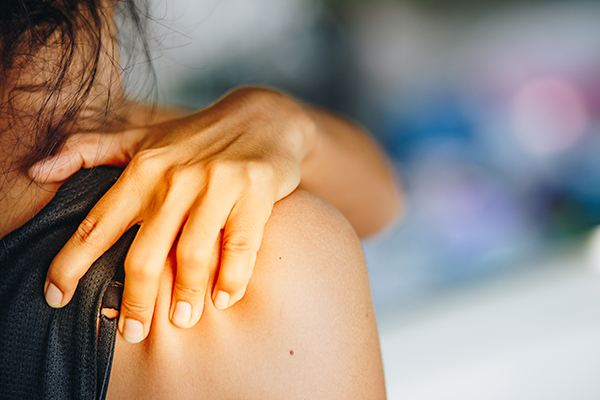Reverse Shoulder Replacement: 5 Things You Can Expect
Conventional total shoulder replacement surgery is considered the most reliable surgical option for those looking to regain movement and function in a severely injured or damaged shoulder, and most cases of shoulder arthritis. Some more complex shoulder conditions or ball and socket damage in the shoulder may warrant a reverse total shoulder arthroplasty, or reverse shoulder replacement. Conditions where reverse shoulder replacement may be recommended include large rotator tears that cannot be repaired, or a complex shoulder arthritis resulting from severe cuff tear, known as cuff tear arthropathy. Previous shoulder replacements that were not successful, complex fractures of the shoulder joint, and tumors of the shoulder joint may also suggest a reverse total shoulder replacement as the recommended treatment option from your orthopedic surgeon.
With a conventional shoulder replacement, a plastic cup device is fitted into the shoulder socket and a metal ball is attached to the top of the upper arm bone. In a reverse total shoulder replacement, the socket and metal ball are switched. This configuration of the medical device relies on different muscles to move the arm, thus avoiding the use of the damaged shoulder joint and muscles. A potential setback from this surgery is that it is often accompanied by a tough and lengthy recovery process. Understanding the process, and the importance of following through with your physical therapy program, are key. Here are five things you should readily expect following a reverse shoulder replacement surgery.

Limited Range of Motion Initially
Immediately following reverse shoulder replacement surgery, you won’t have a vast range of motion; you’ll likely be unable to move your arm over your head. Instead of mistakenly putting stress on your affected joint, you should have more critical objects moved to lower shelves to make them easier to access. You should ask your friends and family to do this as soon as your surgery is over so you can quickly normalize your life, even if you have some temporary limitations.
Joint Immobilization
To keep your shoulder joint immobilized and stable after surgery, you’ll be fitted with a sling by your doctor. Since you won’t be able to use one of your arms for a few weeks, you should have your friends and family give you a hand with daily tasks for a few days, at least until you’re back on your feet. The surgery itself can take a lot out of you; having a support group can be a huge relief.
Physical Therapy
If you stick to a rigorous physical therapy schedule, you should expect to see a higher range of motion a few weeks following your reverse shoulder replacement surgery. It’s crucial you start working with a physical therapist following your surgery so the two of you can figure out the best exercise plan to build up your strength. Physical therapy can also help protect the healing tissues around your affected joint, as well.

Prescribed Medication
Before your surgery, your doctor will likely prescribe medication such as narcotics and antibiotics to reduce pain and prevent infection, respectively, in your shoulder. Make sure you fill these prescriptions before your surgery so that you have them on hand after your surgery, including any prescribed pain medications. However, if you can’t get these medications filled prior to your surgery, you should have a friend drive you to a local pharmacy to pick them up after the surgery.
Cold Compression Therapy
Depending on how your joint looks after surgery, your doctor might recommend you undergo cold compression therapy. This involves using cold compression to speed up the healing process, which can be helpful if you want to return to work as quickly as possible. This therapeutic cold compression method reduces both pain and swelling, removes cellular waste products, and reduces edema from the affected joint. If you’re interested and your doctor hasn’t yet recommended this to you, it’s not a bad idea to bring it up during your next visit before your surgery.
There are five main things you can expect after your reverse total shoulder replacement in Atlanta, including a narrower range of motion initially, the importance of following your physical therapy program, to use of treatment options such as cold compression therapy to speed up the recovery process. Hopefully, you can use this guide to start preparing yourself for your recovery process after surgery. If you have any questions or would like to consult with a shoulder specialist, contact us at OrthoAtlanta today!
LEARN MORE
Understanding the Different Types of Shoulder Replacement Surgery

